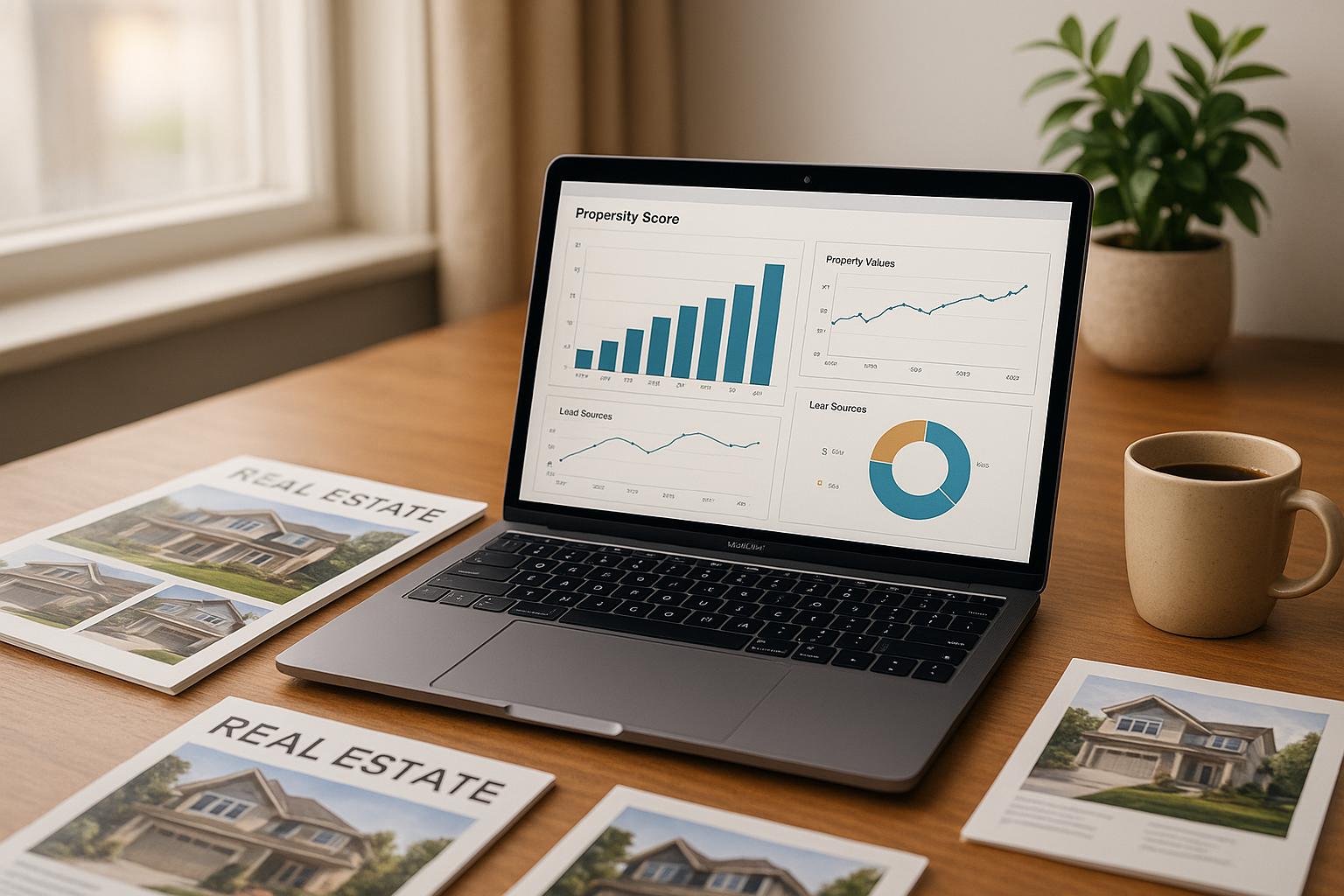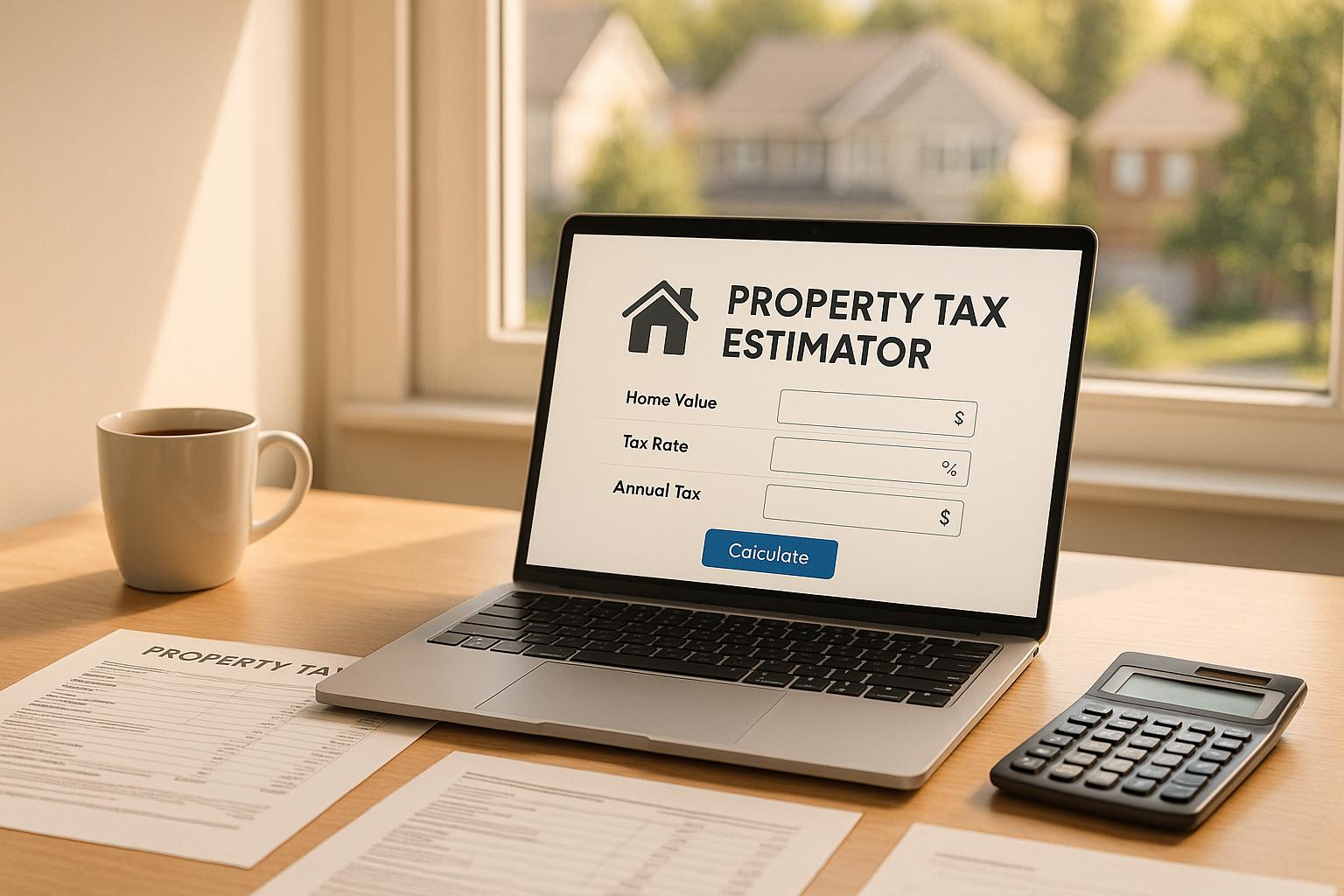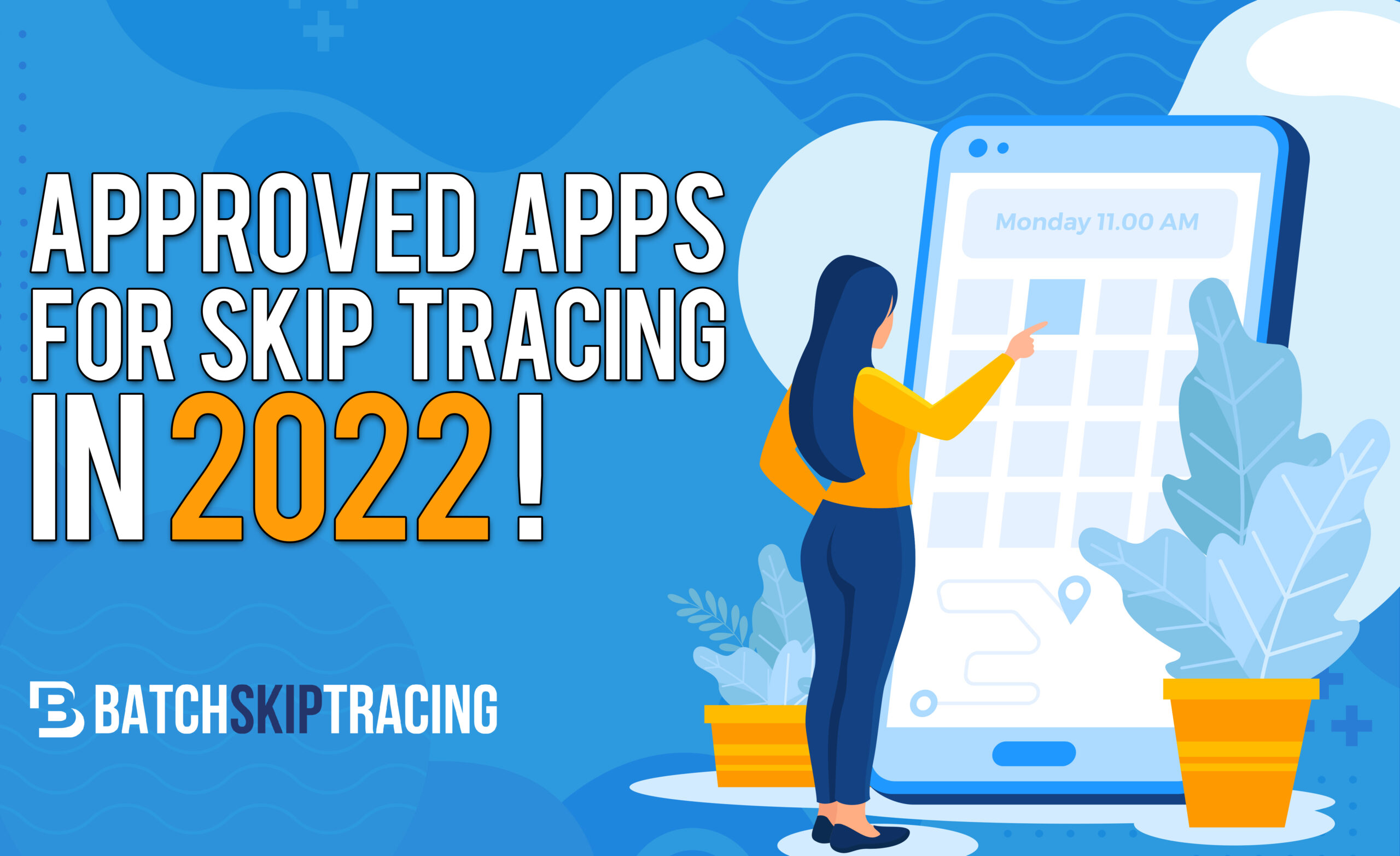Real estate is shifting from guesswork to precision. Traditional methods rely on outdated, static data, wasting time and money on irrelevant leads. Propensity scoring changes the game by predicting which properties are most likely to sell within 6–12 months.
Here’s the core idea: BatchRank AI uses over 800 signals – behavioral, financial, and economic – to assign a score (0–100) to every U.S. property, predicting its likelihood of sale. With an 82.33% accuracy rate, this system helps real estate professionals focus on high-probability leads, reducing costs and improving outcomes.
Key Takeaways:
- Old Methods Fail: Static data is outdated, reactive, and inefficient.
- What’s New: Propensity scoring predicts future sales using real-time data.
- How It Works: Machine learning combines past trends (supervised learning) with emerging patterns (unsupervised learning).
- Why It Matters: Targeted outreach saves time, cuts costs, and improves conversion rates.
- BatchRank AI’s Edge: Scores are based on property features, ownership trends, financial health, behavioral triggers, and market context.
By using propensity scoring, real estate agents, brokers, and service providers can focus on properties that matter most – months ahead of competitors.
Leadflow AI Real Estate Lead Generation Tool: Find Properties Ready to Sell in 2025
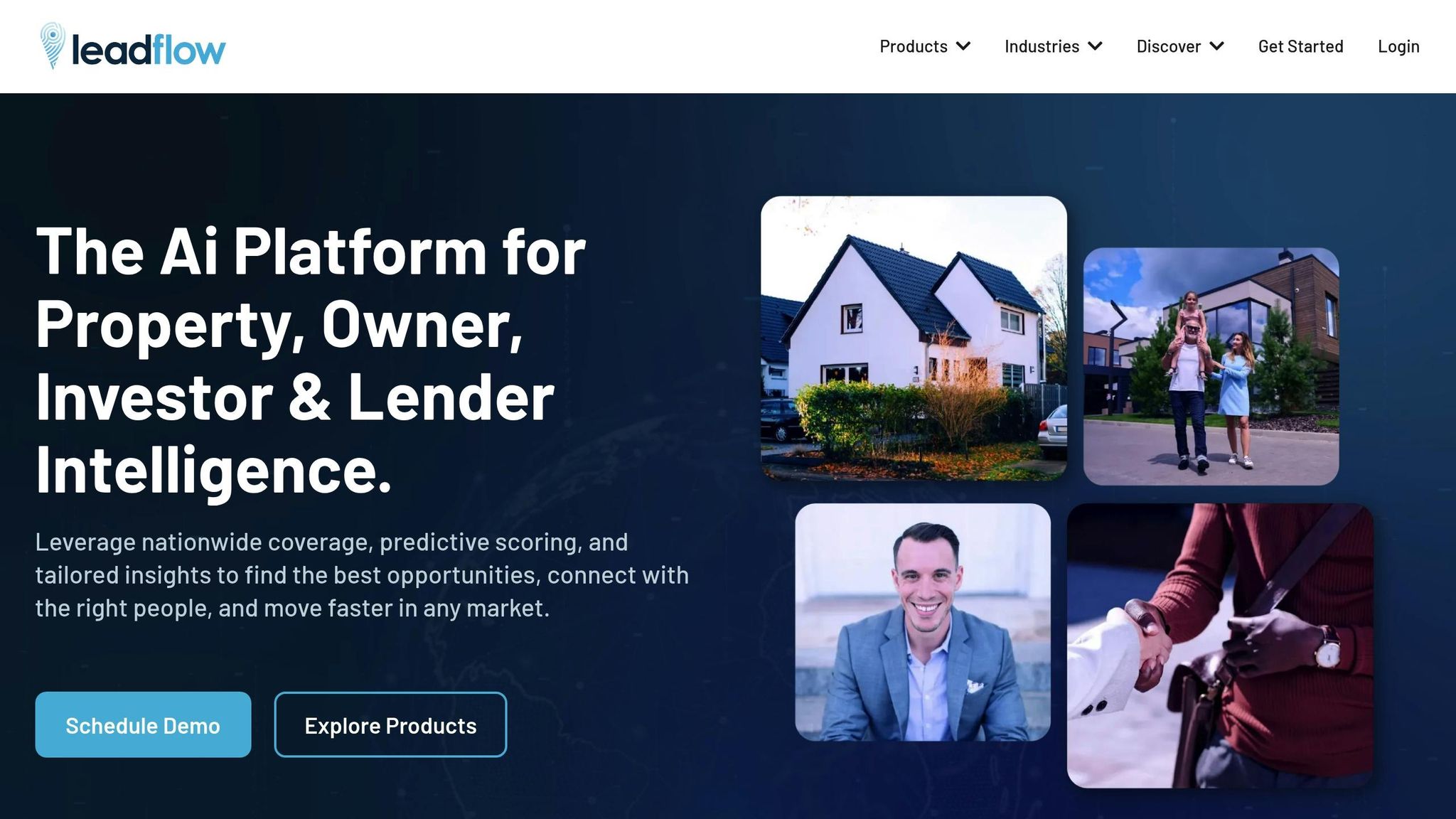
What Is Propensity Scoring in Real Estate
Propensity scoring is a statistical method that evaluates hundreds of data points to calculate a numerical score representing the likelihood that a property owner will sell their home within a specific timeframe, usually 6–12 months. This score transforms raw data into actionable insights, helping real estate professionals zero in on the most promising leads.
What makes propensity scoring so powerful is its ability to spot subtle signs of selling intent long before traditional methods, like public listings or loan applications, come into play. By identifying these early signals, it gives agents a head start in connecting with potential sellers.
How Propensity Scoring Works
At its core, propensity scoring identifies patterns that have historically led to property sales. Advanced platforms process over 1 billion data points, drawing from a massive database that includes details on more than 155 million properties, 221 million homeowners, 350 million phone numbers, and 260 million email addresses.
The scoring algorithm analyzes these variables, weighing their historical connection to actual sales. The result is a numerical score, typically between 0 and 100, with higher numbers indicating a greater likelihood of sale. Properties with scores above a certain threshold are flagged as high-propensity leads, helping agents prioritize their outreach efforts.
Machine Learning Methods Used
Propensity scoring relies heavily on machine learning to uncover complex patterns and adapt to changing market dynamics. Two main types of machine learning models work together to deliver accurate predictions:
- Supervised learning: This approach uses historical data with known outcomes to train algorithms. By analyzing millions of past property transactions, it identifies proven patterns that signal selling intent.
- Unsupervised learning: Unlike its supervised counterpart, this method identifies new patterns without predefined outcomes. For instance, it might detect that a combination of permit activity and shifting demographics in a specific area signals an uptick in sales likelihood.
The supervised model focuses on well-established trends, while the unsupervised model uncovers emerging ones. Together, they create a system that continuously improves as new sales data refines the predictive factors, ensuring accuracy over time.
Real Estate Use Cases
Propensity scoring turns raw data into actionable insights, allowing real estate professionals to move from broad, generalized outreach to highly targeted strategies. Instead of blanketing entire neighborhoods with marketing campaigns, agents can concentrate their efforts on properties with high propensity scores, leading to better conversion rates and a stronger return on investment.
One of the primary benefits is lead prioritization. Agents can access ranked lists of properties based on their likelihood to sell, enabling them to focus their time and energy on the most promising opportunities. This targeted approach significantly reduces the time spent gathering contact information, making it easier to connect with qualified leads.
Beyond lead prioritization, propensity scoring also improves marketing campaign effectiveness, territory planning, and timing strategies. By identifying areas with a high concentration of likely sellers, agents can start building relationships with homeowners well before they list their properties.
The benefits extend beyond real estate agents. Service providers like mortgage brokers, home inspectors, and contractors can use these insights to identify potential clients early, positioning themselves as go-to resources when homeowners are ready to make their next move.
Problems with Static Data Models
The traditional way of handling real estate data has created a system riddled with issues that drain resources and hinder growth. For years, the industry has operated under the assumption that gathering vast amounts of historical data would lead to better results. However, this approach has not only fallen short but has also actively limited profitability and business success.
These models rely heavily on publicly available records, such as deed transfers and mortgage data – information rooted in past events rather than current consumer behavior. This backward focus creates challenges like outdated information, an overwhelming amount of irrelevant data, and poor timing, all of which undermine efforts to acquire customers and engage with the market effectively.
Outdated Information and Reactive Approaches
One of the biggest flaws in static data models is their reliance on outdated information. Unlike systems that update their databases daily, traditional models often work with data that’s already weeks – or even months – old by the time it’s accessed.
"Unlike other providers who resell stale data, our in-house data science team leverages multiple tier-one data sources that are updated daily."
This delay in data updates means that by the time a property transaction appears in public records, the chance to connect with potential clients early has already been missed. Without real-time verification, businesses waste significant portions of their marketing budgets reaching out to people who are no longer viable prospects. This lack of timely insights also leaves companies vulnerable to rapidly changing market conditions, making static models ineffective at capturing the dynamic nature of consumer intent.
Why More Data Doesn’t Equal Better Results
Another major pitfall of traditional models is the assumption that more data automatically leads to better outcomes. This mindset has created a "data deluge", where teams are overwhelmed by massive volumes of unqualified leads. Instead of boosting efficiency, this flood of information forces professionals to spend countless hours sorting through low-quality prospects, driving up the cost per acquisition.
"To reach the right homeowners at the right time, you need real-time insights."
Adding to the problem, traditional list providers often fail to supply actionable data. They may lack crucial details such as updated contact information, household demographics, or property-specific profiles. Without these key elements – like current phone numbers, email addresses, or behavioral cues – static datasets become far less effective for meaningful customer outreach.
Timing and Precision Issues
Perhaps the most damaging flaw of static data models is their inability to get the timing right. In real estate, timing can make or break a campaign. If outreach happens too early or too late, it completely misses the mark on consumer intent.
Static systems also struggle with real-time verification, making it difficult to confirm whether their targeting is actually reaching the right audience. This often results in conversion rates that hover below 1% – a direct consequence of outdated assumptions leading to missed opportunities.
Another issue is the lack of precision in geographic and demographic targeting. While these models might provide a general sense of where past sales have occurred, they fail to identify specific properties or homeowners who are actively considering a sale. This broad, scattershot approach forces marketers to cast wide nets, leading to wasted resources and lower returns on investment. The inability to align outreach with real-time consumer intent highlights the need for systems that can deliver predictive insights.
In today’s fast-paced real estate market, static data models – built for a slower era – simply can’t keep up. Businesses now require timely, verified insights to implement proactive strategies that truly drive results.
How BatchRank AI Creates Propensity Models
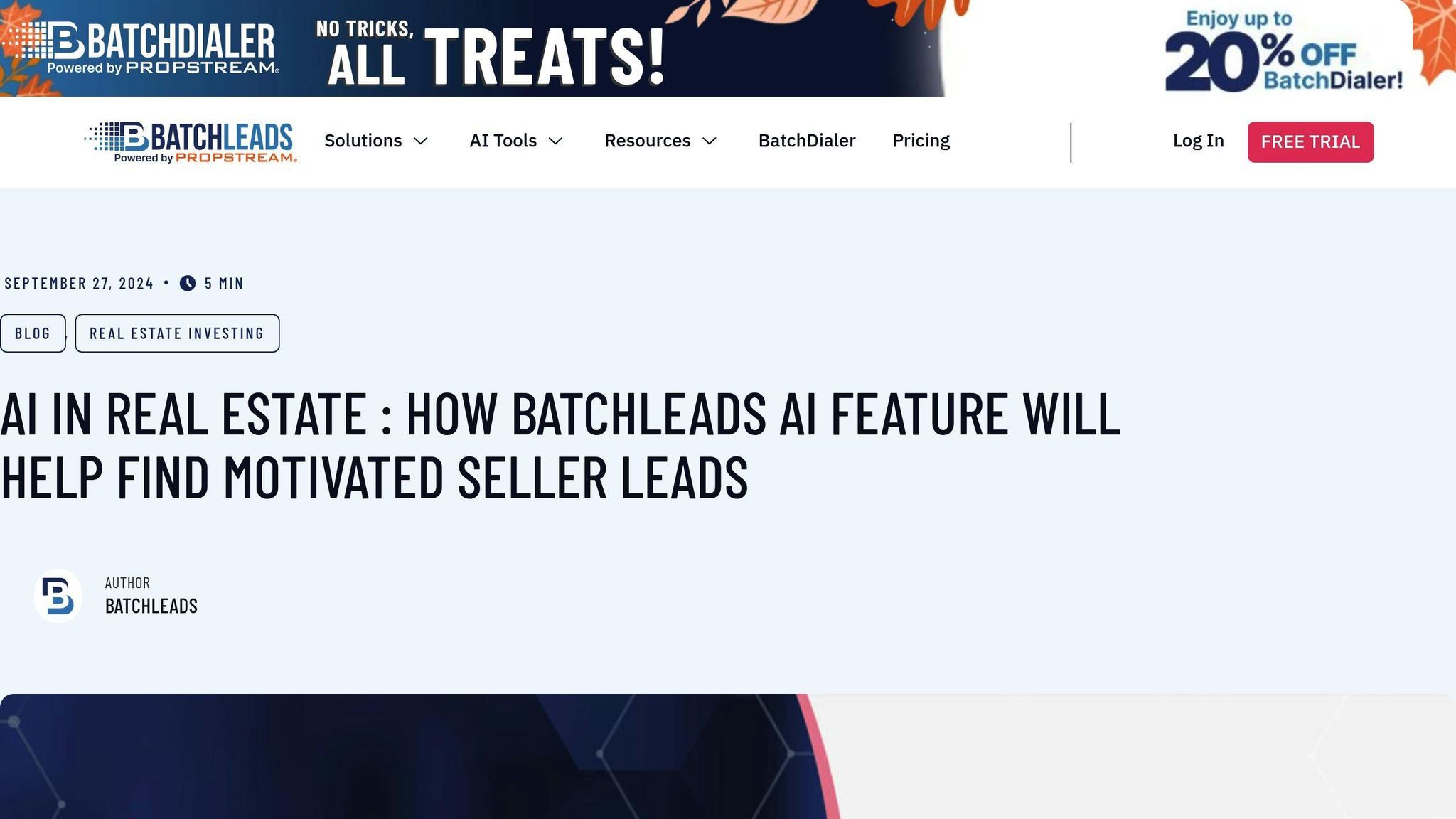
BatchRank AI takes a forward-thinking approach by addressing inefficiencies in traditional data analysis. Instead of relying solely on static property records, it uses a predictive system that generates dynamic propensity scores. These scores help businesses target customers with greater precision by incorporating real-time behavioral signals, financial trends, and market dynamics that influence homeowner decisions.
This system transforms vast amounts of data into a single, actionable score, fundamentally changing how businesses identify and engage with potential customers.
5 Data Categories Used for Scoring
BatchRank AI organizes its data into five key categories, each playing a vital role in shaping the final propensity score:
- Property DNA: This category examines the static features of a property, such as square footage, number of bedrooms and bathrooms, lot size, and zoning classifications. While these characteristics remain relatively stable, they provide essential context for understanding a property’s market position and buyer appeal.
- Ownership Lifecycle: By analyzing ownership patterns, this category identifies trends that often precede selling decisions. Factors like length of ownership, last sale dates, and generational transfers help pinpoint properties with a higher likelihood of being sold.
- Financial Health: Here, BatchRank AI dives into financial indicators such as estimated equity, mortgage details, current interest rates, and liens. Properties with significant equity or signs of financial distress are scored higher, reflecting their increased likelihood of entering the market.
- Behavioral Triggers: This category tracks real-time signals, like building permits for renovations, divorce filings, pre-foreclosure notices, and USPS data on vacant properties. These events often hint at an upcoming sale, sometimes months in advance.
- Macroeconomic Context: Broader market trends, like local inventory levels, interest rate changes, and neighborhood development, are also factored in. For instance, a property in a rapidly appreciating area might score higher than one in a stagnant market.
Combined Learning Models
BatchRank AI uses a hybrid system that blends supervised and unsupervised learning to achieve high accuracy and adaptability:
- Supervised Learning: This component is the backbone of the system, trained on millions of historical property transactions across the U.S. It excels at identifying established patterns and data combinations that typically lead to sales.
- Unsupervised Learning: Acting as the system’s exploratory engine, this component identifies emerging trends and new correlations within the data. For example, it might uncover a unique link between demographic shifts and permit activities in a specific area, offering fresh predictive insights.
These two models work together seamlessly. The supervised model ensures stability and reliability, while the unsupervised model keeps the system agile and responsive to market changes. This dual approach has enabled BatchRank AI to achieve an impressive 82.33% precision rate, setting a high standard for predictive accuracy.
From Reactive to Planned Customer Outreach
BatchRank AI’s precise scoring enables businesses to shift from reactive to proactive customer engagement, offering a forecast of market shifts 6–12 months in advance. This early insight allows companies to build relationships with potential customers long before they publicly signal their intent to sell.
Instead of competing in crowded markets after properties are listed, businesses can establish themselves as trusted partners early on. This proactive approach reduces competition and enhances customer loyalty.
The system’s propensity scores also make marketing efforts far more efficient. Rather than targeting entire zip codes or broad demographic groups, businesses can zero in on property owners who show clear signs of selling intent. This targeted strategy not only improves ROI but also optimizes resource allocation. Marketing budgets can be spent with confidence, and sales territories can be structured around actual opportunities rather than assumptions.
Beyond individual campaigns, BatchRank AI’s insights allow companies to adopt a more strategic, relationship-driven business model. By engaging with homeowners at the right time, businesses can improve conversion rates and provide a better customer experience, ensuring outreach is relevant and well-timed rather than intrusive or irrelevant.
sbb-itb-8058745
Performance Results and Business Impact
BatchRank AI’s performance isn’t just theoretical – it’s been rigorously validated through back-testing with millions of real property transactions. The results? A game-changing approach to customer acquisition in the real estate market. By delivering consistent and reliable outcomes, this system paves the way for measurable business success.
Accuracy Testing and 82.33% Precision Rate
BatchRank AI boasts an 82.33% precision rate, which is more than just a number – it’s a testament to its ability to identify properties with a high likelihood of selling. This precision reshapes how businesses target potential customers.
The system’s accuracy comes from continuous back-testing across millions of transactions in all 50 states. By analyzing patterns from completed sales, it uncovers the key data signatures and behaviors that signal a property’s sale potential. What’s remarkable is its ability to maintain this precision across different market conditions, property types, and regions.
Even during volatile market cycles – when traditional methods often falter – BatchRank AI remains dependable. Its dual learning system plays a critical role here: supervised learning provides stability by leveraging proven patterns, while unsupervised learning identifies new trends that might indicate emerging market behaviors. This blend ensures the system adapts while staying reliable.
For businesses, this precision means confidence. Sales teams can focus their efforts on genuine prospects, knowing they’re not wasting time or resources chasing cold leads.
ROI and Cost Savings
The financial impact of BatchRank AI is just as impressive as its precision. Traditional real estate marketing often relies on casting a wide net, accepting conversion rates below 1% as the norm. This scattershot approach wastes resources and forces companies to sift through countless uninterested homeowners to find a handful of qualified leads.
BatchRank AI flips this model on its head. With its 82.33% precision rate, marketing becomes laser-focused and cost-efficient. Instead of spending heavily to reach a broad audience, businesses can target their efforts on pre-qualified prospects, dramatically improving engagement and reducing waste.
This shift benefits multiple areas of a business. Sales teams spend less time chasing unqualified leads, allowing them to concentrate on building relationships and closing deals. Marketing budgets stretch further, as campaigns focus on homeowners who are likely to sell within a specific timeframe. The result? Lower customer acquisition costs and higher returns on investment.
In competitive markets, the advantages are even more pronounced. BatchRank AI enables businesses to connect with homeowners months before their properties hit the market. This early engagement not only reduces competition but also positions companies as trusted advisors rather than just another service provider vying for attention.
The system’s predictive window – spanning 6 to 12 months – adds another layer of value. It allows businesses to plan ahead with precision, from staffing and inventory management to marketing campaigns. By aligning resources with anticipated market activity, companies can minimize waste and make smarter, more impactful decisions.
Territory management also becomes more strategic. Instead of dividing markets purely by geography, businesses can allocate resources based on propensity scores. High-opportunity areas receive focused attention, while lower-propensity regions can be approached with cost-effective strategies. This data-driven approach ensures resources are used where they’ll have the greatest impact, boosting overall performance and efficiency.
BatchData Tools for Real Estate Professionals
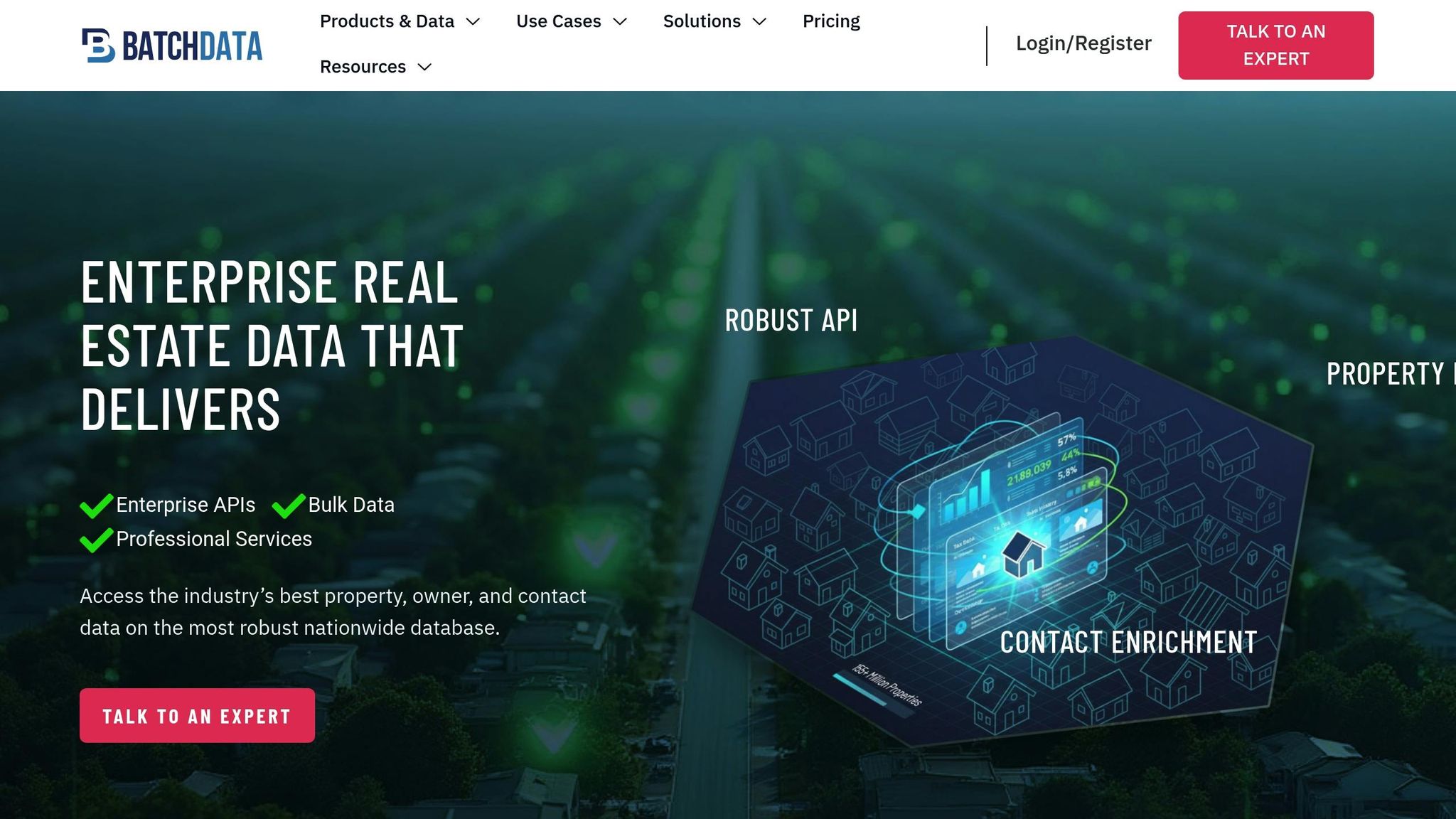
BatchData takes the concept of propensity scoring and turns it into practical tools that real estate professionals can use. With the help of BatchRank AI’s predictive technology, the platform tailors its solutions to create real results for agents, brokerages, and enterprise-level operations. Here’s a closer look at how these tools support everyone in the real estate space, from solo agents to large organizations.
Data Services for Propensity Scoring
BatchData’s main strength is its ability to transform basic property data into actionable insights through a process called data enrichment. By analyzing over 800 signals across five key categories, the platform builds detailed property profiles that fuel BatchRank AI’s predictive scoring system.
This goes far beyond the information found in public records. While traditional sources might include details like square footage or sale history, BatchData enriches these records to create a more complete picture of a property’s likelihood to sell.
For professionals looking to connect with potential sellers, the skip tracing service provides verified and up-to-date contact information for homeowners identified as high-propensity sellers. This gives real estate agents a direct line to those most likely to sell within the next 6–12 months.
For enterprises, BatchData offers bulk data delivery to cover wide market areas. These custom datasets include millions of properties, complete with BatchRank AI scores, enriched profiles, and contact details. Data can be delivered securely through file transfers or direct database connections, and clients can customize their datasets by specifying geographic areas, score ranges, and update schedules.
BatchData’s API solutions make it easy for real estate tech platforms to integrate propensity scoring into their existing systems. These APIs provide real-time access to BatchRank AI scores and can be seamlessly connected to popular CRMs like Chime and KvCORE. Whether for batch processing or instant queries, the APIs enable smooth integration into existing workflows.
For smaller teams and individual agents, BatchData offers user-friendly tools. The BatchData Dashboard allows agents to upload lists, search specific addresses, and instantly receive propensity scores with detailed explanations. Additional features include lead scoring widgets that can be embedded on websites and automated email alerts for properties in an agent’s target area that show high selling potential.
Pricing Options
To complement its services, BatchData provides flexible pricing models designed to suit businesses of all sizes. Two distinct approaches ensure that both individual agents and large enterprises can access these tools without unnecessary complications or costs.
| Pricing Model | Ideal For | Key Features | Payment Structure |
|---|---|---|---|
| Pay-As-You-Go | Individual agents, small brokerages, seasonal operations | No monthly minimums, instant setup, volume discounts | Per property lookup, per contact record, per API call |
| Custom Solutions | Enterprise clients, institutional investors, tech platforms | Dedicated account management, white-label access, custom SLAs | Annual contracts with volume-based tiers |
The Pay-As-You-Go model is perfect for agents and smaller brokerages who want to try out propensity scoring or focus on specific markets. This option charges on a per-use basis – for each property lookup, contact record, or API call – offering enterprise-level insights without long-term commitments. Agents can also purchase credits in advance to unlock volume discounts.
For larger organizations, the Custom Solutions model provides tailored options. This includes dedicated account management, white-label API access, and the ability to integrate proprietary client data into the BatchRank AI model for even more precise predictions. Annual contracts with tiered pricing ensure cost predictability while granting access to all of BatchData’s advanced features.
Both pricing models are built around a commitment to data accuracy and compliance. BatchData adheres to TCPA regulations for contact information, offers opt-out mechanisms, and maintains detailed audit trails. This helps real estate professionals stay compliant while leveraging predictive intelligence to stay ahead in the market.
The Future of Predictive Intelligence in Real Estate
The real estate industry is at a turning point. Traditional marketing methods, reliant on broad, data-heavy outreach, are proving inefficient, with conversion rates plummeting below 1% and marketing expenses soaring. Predictive intelligence offers a game-changing solution, transforming how professionals target clients. This evolution sets the stage for the advanced capabilities of BatchRank AI.
BatchRank AI’s precise targeting shifts the focus from reactive strategies to highly targeted engagement. This accuracy reshapes real estate marketing, replacing speculative efforts with a more scientific, data-driven approach.
Moving beyond outdated reactive models, predictive intelligence gives real estate professionals a significant edge. By identifying potential sellers months before they list their properties, agents can establish relationships early, positioning themselves as trusted advisors. This proactive approach not only reduces competition but also allows for personalized service and the potential for premium pricing.
High-quality data is essential for the success of predictive intelligence. BatchData ensures its platform is built on rigorously updated, real-time information, eliminating the risks of relying on outdated or inaccurate records.
To enhance these capabilities, seamless API integrations allow real estate professionals to incorporate predictive intelligence directly into their existing CRMs and marketing platforms. This connection enriches their data with actionable insights while maintaining familiar workflows. By automating prospecting efforts, teams can transition from manual, reactive processes to more efficient, planned outreach strategies.
The benefits go far beyond lead generation. Predictive intelligence boosts the effectiveness of marketing campaigns, shortens deal cycles through precise targeting, and optimizes resource allocation across the organization. With a focus on high-probability prospects, sales teams can dedicate more time to qualified leads and reduce time wasted on cold outreach.
Predictive intelligence also transforms property data from a static resource into a powerful strategic asset. Companies that can leverage real-time, comprehensive data to make proactive decisions will dominate the competitive landscape. BatchData’s claim of helping users reach 76% more property owners with three times the accuracy of traditional methods highlights the measurable advantage these tools provide. As predictive technologies continue to evolve, early adopters will gain an even greater edge.
The future of real estate belongs to those who can anticipate market trends instead of merely reacting to them. Predictive intelligence empowers professionals to make smarter decisions, work more efficiently, and maintain a competitive advantage in an increasingly complex market.
FAQs
How does propensity scoring help real estate agents prioritize leads more effectively?
Propensity scoring enables real estate agents to zero in on property owners who are most likely to sell soon. Instead of casting a wide net with outdated strategies like mass marketing to entire neighborhoods, agents can direct their attention to a more focused and promising group of potential sellers.
This targeted, data-driven method cuts down on wasted time and resources, replacing broad, low-impact efforts with more precise, high-value interactions. By predicting seller intent well ahead of time, agents can build strong relationships with prospects long before competitors step into the scene.
What data does BatchRank AI use to predict if a property is likely to sell?
BatchRank AI processes more than 800 data signals to estimate the likelihood of a property going on the market. These signals are divided into five main categories:
- Property DNA: Details such as square footage, number of bedrooms and bathrooms, and zoning specifications.
- Ownership Lifecycle: Information about the property’s ownership history, including how long it’s been owned and the most recent sale date.
- Financial Health: Metrics like estimated equity, mortgage specifics, and any liens on the property.
- Behavioral Triggers: Real-time events such as building permits, divorce filings, or pre-foreclosure notifications.
- Macroeconomic Context: Broader influences like neighborhood trends, local inventory levels, and interest rates.
By weaving together these varied signals, BatchRank AI provides precise insights into which properties are most likely to hit the market soon.
How can real estate professionals use BatchRank AI’s propensity scoring with their current CRM systems?
Real estate professionals can easily incorporate BatchRank AI’s propensity scoring into their current CRM systems using BatchData’s API. This setup helps automate workflows and enrich CRM data with actionable insights, allowing for smarter and more informed decision-making.
With BatchRank AI’s predictive intelligence, professionals can focus on high-priority leads, fine-tune their marketing strategies, and simplify the customer acquisition process – all without needing to switch tools or systems.
